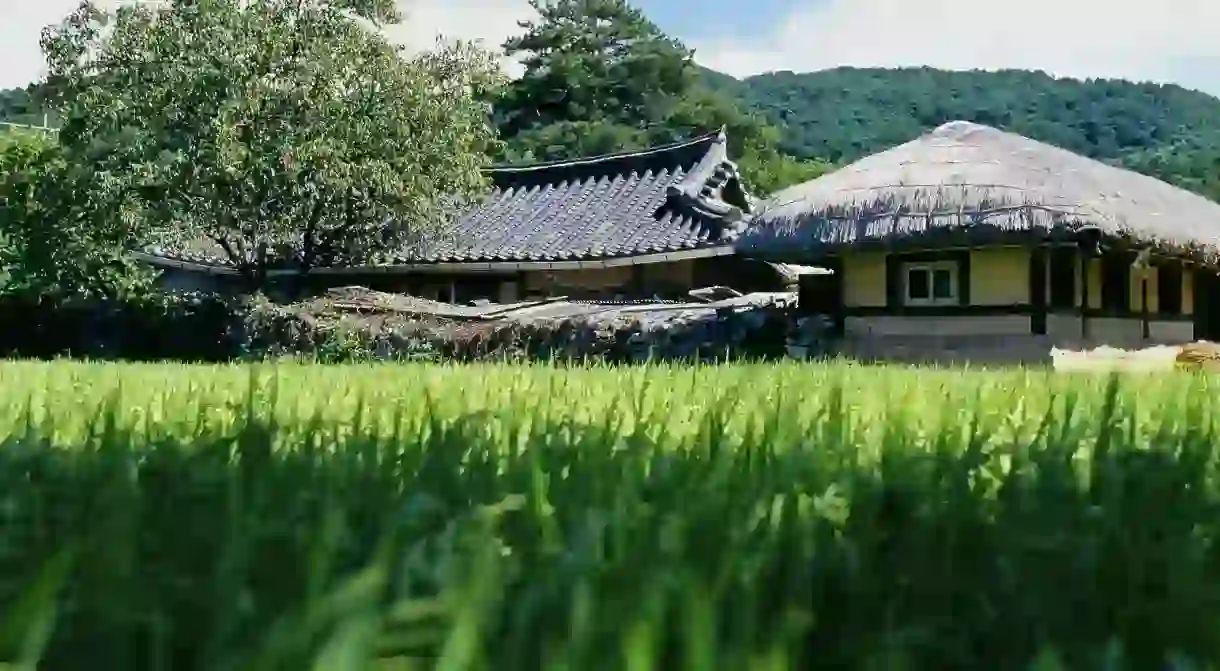Epic Places in South Korea Not Even South Koreans Know About

South Korea is a country filled with spectacular natural scenery and enchanting historical towns and villages. While some are more obvious like Seoul’s royal palaces, or the beaches of Busan, there are plenty that elude even the locals. Here are the country’s best off the beaten path destinations that you’ve probably never heard of.
Hwaamdonggul Cave (Jeongseon)

Previously a gold mine that operated from 1922 to 1945, Hwaamdonggul Cave now serves as an educational venue where visitors can learn about subterranean ecology. Featuring natural stalactites, the entire site consists of five “chapters” that each showcase a different aspect of mining and Mother Nature.
Sado Island (Yeosu)
Considering that Sado Islandis a potential world heritage site, one might expect the area to be plagued by tourists. Fortunately, few people know about it. Often called “Korea’s Jurassic Park,” Sado Island is one of the few places in the world that boasts preserved dinosaur tracks. It’s also known for its rocks and the legends surrounding them – in particular, a turtle-shaped rock is said to have inspired national hero General Yi Sun-shin’s famous turtle ship.
Oeam Folk Village (Asan)

The charmingly quaint Oeam-ri Folk Village is made up of more than 80 hanok and straw houses that are still occupied by the families of its founder Lee Yean, who settled in the area some 500 years ago. A simple walk along the stone fence alleyways, under persimmon and gingko trees, makes you feel as if you have stepped back in time. In addition to admiring the traditional atmosphere, visitors can sample yusil wine, a beverage made from lotus roots and fermented evergreen leaves.
Dreamy Camera Cafe (Yangpyeong)
Cafe, Coffee, Tea , Fast Food, Dessert, Pastries, Vegetarian
Located about 40 miles outside of Seoul in the small city of Yangpyeong is one of Korea’s most unique cafes. Constructed to look like a classic Rolleiflex twin-lens camera, Dreamy Camera Cafe houses the gorgeous camera collection and memorabilia of the photography enthusiast owner. It’s also situated in a picturesque rural location, which only helps to add to the appeal.
Yulpo Beach (Boseong)

A bit off the beaten path, Yulpo Beach is a favorite spot for those in the know. The 1.2 kilometer (0.74 mile) stretch of sand may be on the small side but the scenery is spectacular. Not only are the sunsets beautiful, but the pine trees that border its shores add a sense of remoteness to the site. Just a short drive from Boseong’s popular green tea plantations, Yulpo is a great spot to camp out for the night after a long day of sightseeing.
Namhansanseong Provincial Park (Gwangju)
Park, Historical Landmark, Forest

Namhansanseong Provincial Park is a sight to behold all year round. In spring, acacia trees grow thick, giving visitors a preview of the verdancy that blankets the mountain in summer. Fall is just as beautiful, when red autumn leaves add a color to the scenery. Iljangsan, the highest peak, offers incredibly views not only of Seoul and the surrounding Gyeonggi Province, but also Incheon’s Nakjo area.
Samtan Art Mine (Jeongseon)
Converted from an abandoned mine at the foot of Hambaeksan Mountain, the country’s primary stone coal production area, into a sprawling cultural art space, Samtan Art Mine is a must-visit attraction for art enthusiasts and history buffs alike. Each of the buildings was refurbished and turned into a exhibition area, while old shafts were cleaned up and illuminated to enhance their natural beauty. Featuring ever-changing contemporary exhibits, Samtan Art Mine is a vibrant hub of modern art that pays tribute to its industrial past.
Buam-dong (Seoul)
Nestled between Inwang and Bugak mountains, Buam-dong is a tranquil neighborhood located in the center of Seoul, shielded by nature from the concrete that makes up the remainder of the metropolis. Boasting only a single bus stop, Buamdong may not be the most convenient place to visit, but its quaint cafes, peaceful nature trails and unique charm make it well worth the trek.
Baekje Cultural Land (Buyeo)
Spread over 3,276,000 square meters, Baekje Cultural Land is a treasure trove of cultural relics from the Baekje era (18 BC – 660 AD) that transport visitors back to the Three Kingdoms period. Sabigung Palace, for example, reproduces the scenery of a royal palace while Neungsa Temple, a royal temple representative of Baekje, has been replicated according to the actual size of the historic site.













